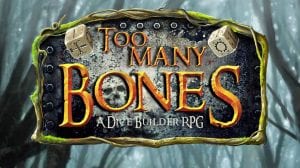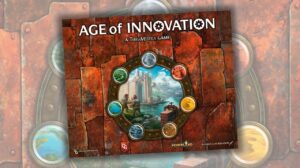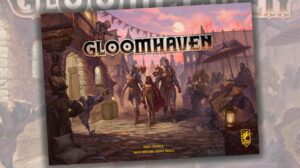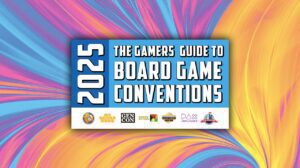Disclosure: Meeple Mountain received a free copy of this product in exchange for an honest, unbiased review. This review is not intended to be an endorsement.
Manhattan Project: War Machine feels like a pared down hybrid of Lorenzo il Magnifico’s tableau activation and Race for the Galaxy’s follow mechanic, which is fine, because those are both great mechanisms. I’m a fan of rolling and allocating, even if the whole package feels familiar.
How do war work?
If you’re going off the rulebook alone, War Machine’s turns look like they’re going to take too long. But, in reality, they don’t overstay their welcome, and it all fits in with the abstract setting of “WAR! Let’s escalate our WAR ECONOMIES!”
On your turn, you roll 3 dice (more if you’ve unlocked the ability) and you get to reroll twice, as long as you keep a die from each roll. Then, one at a time, you allocate all your dice to various action spaces on the board. Nuclear symbols are wild but give you a negative point if you don’t deal with the waste they produce at the end of the game (represented by a token) and power symbols have to go into an adjoining space that’s been activated by another non-power die face.
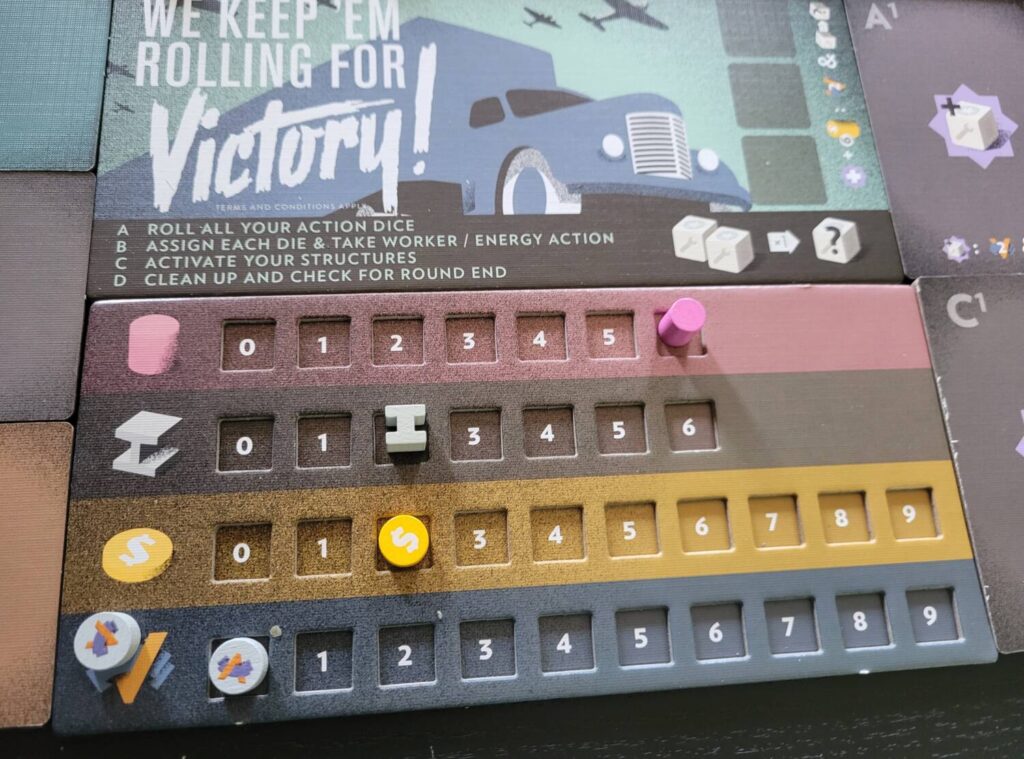
The actions are fairly straightforward. Most of them get you resources, upgrade your player board, allow for trades, and let you build special building tiles (more on this last one in a moment). It’s standard stuff.
But, the follow mechanic adds texture to what would otherwise be a textbook affair. Whenever you use a non-power-symbol die, each player gets to do a more pared down version of the action you chose. Built a building with a discount? Each other player now gets to do the same sans discount. Got some iron? Each other player gets a little bit. The power symbol on the dice allows you to choose the lesser version of the action, but nobody gets to follow you.
Follow the leader
The follow system is what makes the game work, because there’s one other component to a player turn that I haven’t mentioned yet. After you’ve done your dice placements, you allocate the dice again to a personal tableau area that follows similar rules to the main board. You have building tiles that activate in different ways and provide resources, points, and synergistic abilities.
What makes the follow mechanic interesting here is precisely what makes Race for the Galaxy’s role selection interesting. Sure, it might make sense for you to do the most powerful actions you can for yourself on your turn, but this is giving other players materials that they in turn can use to power up their own engines. You have to get a sense of what other players are building toward to make sure that you’re not giving other players a leg up on you for a minimal gain.

This is what I mean by “escalation” as a theme. The economies in the game naturally start scaling each other up, because you have to take inefficient moves to keep other players from benefiting from your choices. It fits with the idea of war profiteering and escalation, where each player is just getting bigger and bigger as more war machine is built.
Slight but enjoyable
War Machine isn’t going to set the world on fire with exciting new mechanisms or completely reinvent the euro-builder-efficiency genre. But, it is enjoyable, with turns that keep everyone involved throughout the game, and it doesn’t overstay its welcome. Depending on the number of players, the game is only a handful of rounds, and it feels well tuned. Getting to be in the driver’s seat once per round is exciting, and you try to make the most of it before the game is done.
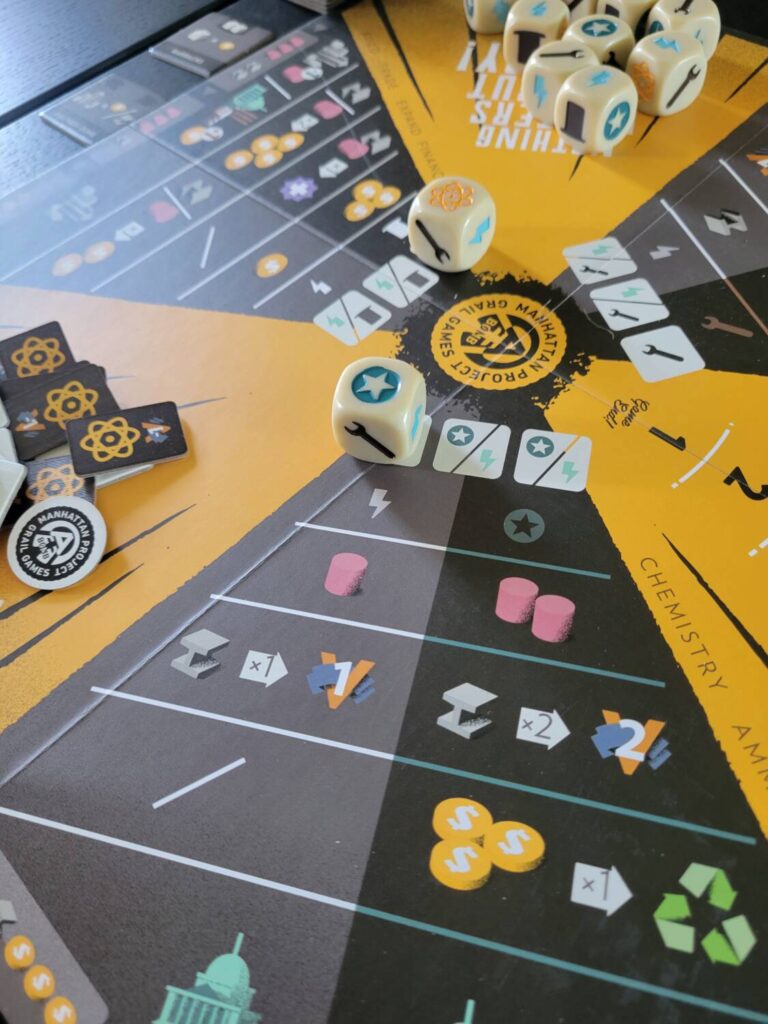
I haven’t played any of the other games in this series other than Manhattan Project: Energy Empire, and I don’t remember that game very well. War Machine has excellent art from Heiko Günther, and is a great mid-weight way to end an evening or warm up for a multi-game series. Just make sure to watch how much nuclear waste you produce. Life imitates art.



